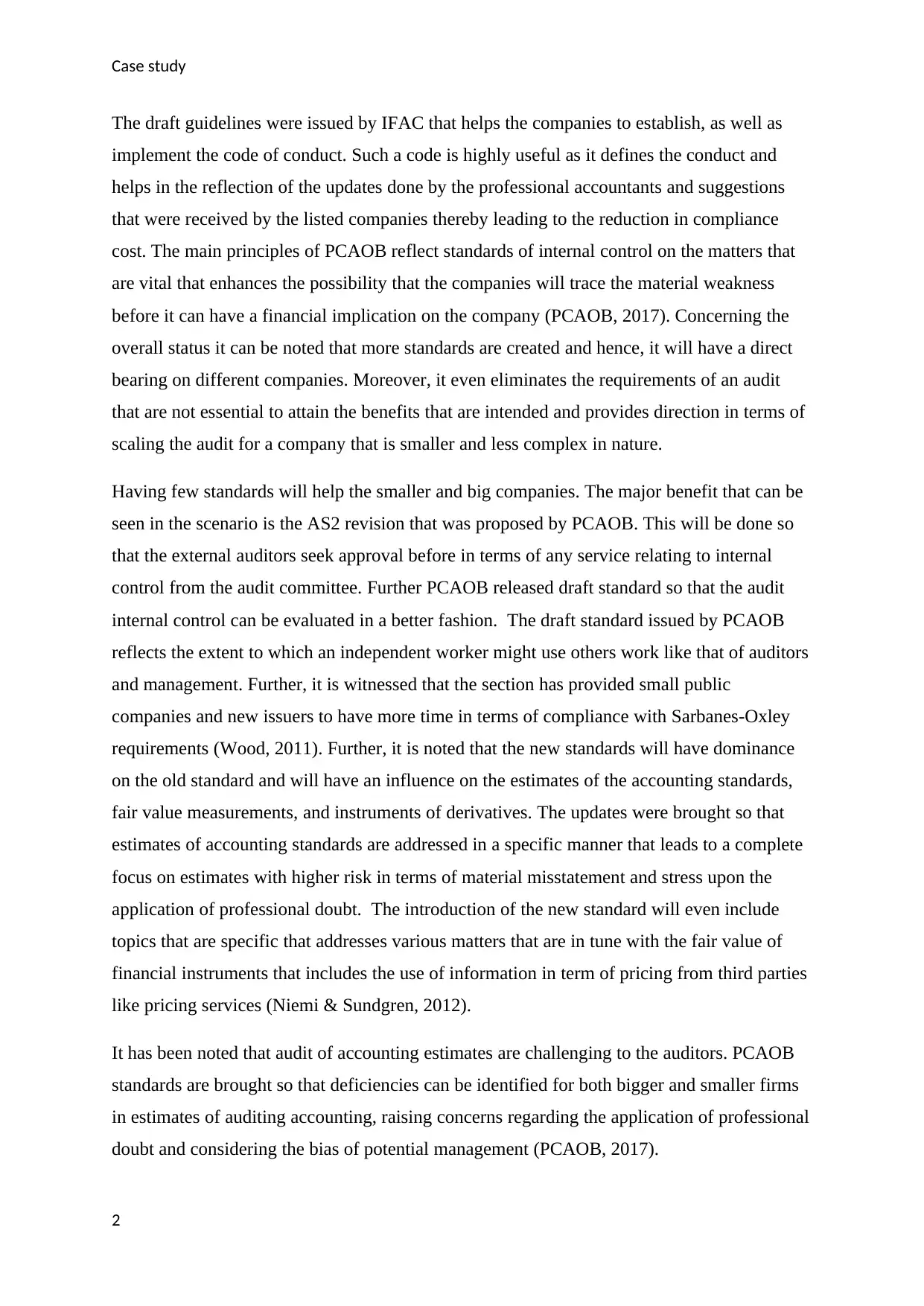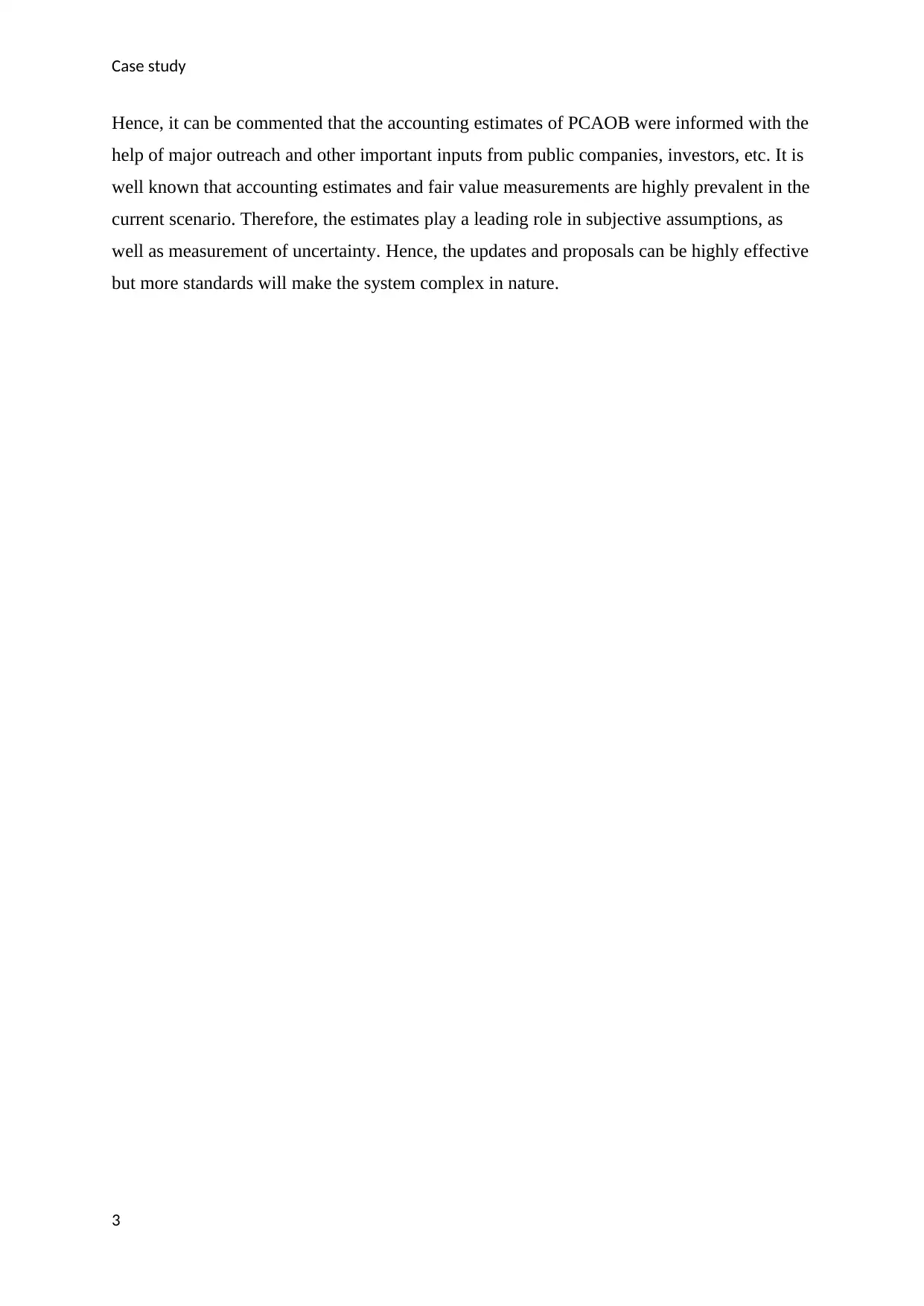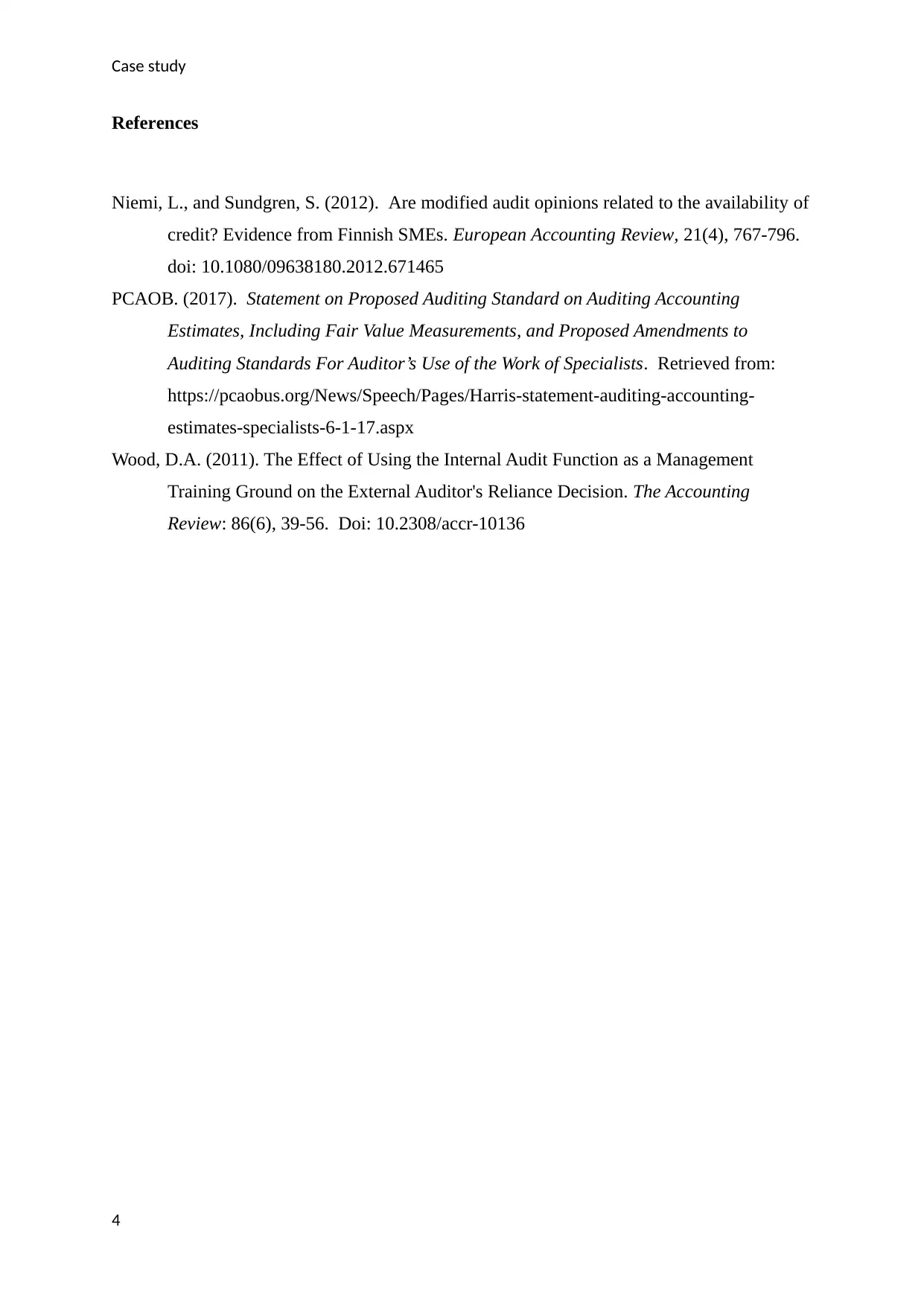Case Study: PCAOB Standards, Auditing Accounting Estimates
VerifiedAdded on 2023/04/08
|4
|661
|225
Case Study
AI Summary
This case study examines the impact of PCAOB standards on accounting practices. It analyzes the draft guidelines issued by IFAC, which help companies establish and implement codes of conduct, leading to reduced compliance costs. The study focuses on the main principles of PCAOB, particularly those related to internal control standards, which are crucial for identifying material weaknesses before they affect a company's finances. The case study also explores the benefits of the AS2 revision proposed by PCAOB, requiring external auditors to seek approval for internal control services from audit committees. Furthermore, it reviews the draft standard released by PCAOB regarding the evaluation of internal control audits and the use of others' work. The study highlights the influence of new standards on accounting estimates, fair value measurements, and derivative instruments, emphasizing the application of professional doubt and addressing specific matters related to fair value of financial instruments. The case concludes by acknowledging the challenges auditors face in auditing accounting estimates and the role of PCAOB standards in identifying deficiencies within both large and small firms.
1 out of 4











![[object Object]](/_next/static/media/star-bottom.7253800d.svg)